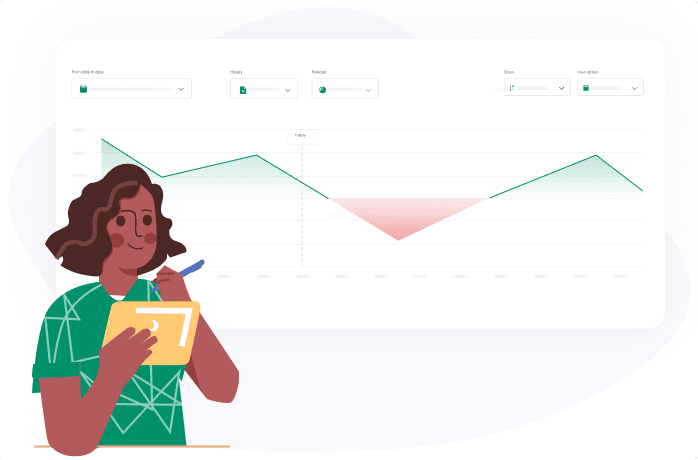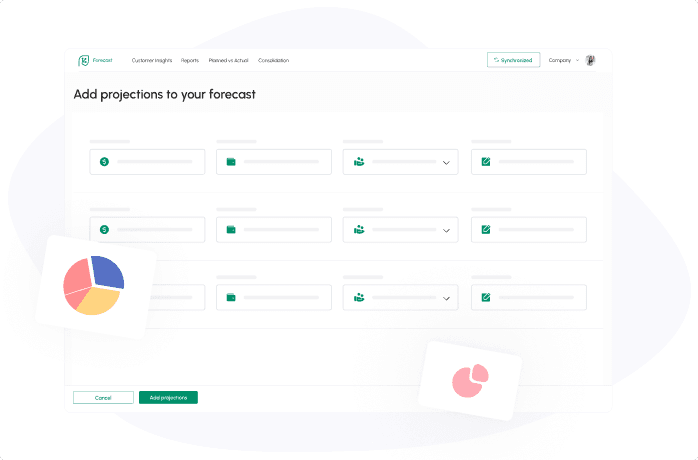

Financial consolidation is the process of combining financial data from multiple companies. Consolidation allows stakeholders and leaders to gauge the financial health of all subsidiaries at a glance.
If you have multiple subsidiaries, it’s important to understand the components of consolidation, the role of technology, best practices and achieving compliance.
Key Components of Financial Consolidation
There are several key components of financial consolidation, including:
Data Collection and Validation
Data is a vital component in financial consolidation. It must be collected and validated properly across all departments.
It must also comply with all local accounting regulations.
Investing in an ERP and FP&A system can help ensure accurate and valid data.
Intercompany Eliminations
Financial consolidation also involves intercompany eliminations. Intercompany eliminations cancel intercompany transactions that don’t have an impact on the net assets of the parent company.
This process ensures that the parent company’s financial statements can be consolidated properly and accurately. Otherwise, the balance sheet for the parent company may become inflated.
There are three main types of intercompany eliminations, including intercompany:
- Stock ownership, including assets and stakeholder equity, accounts for each subsidiary.
- Debt, such as a loan between subsidiaries or the parent company and a subsidiary.
- Expenses and revenue, including sales, revenue or interest on loans, and costs of goods sold from intercompany sales.
Currency Conversion
Another component of financial consolidation is currency conversion, which features the conversion of amounts stored in a local currency into a group currency.
Accounting for Acquisitions and Disposals
Acquisitions and disposals involve the purchase or sale of any controlling interest in a business or its entities. Third-party reports and even assessments should include transactional data to allow stakeholders to better understand company performance.
Forecasts can also include acquisitions and disposals to better understand how they may impact performance.
Role of Technology in Financial Consolidation
Technology should play an important role in financial consolidation, as modern solutions will streamline the process and help ensure accuracy.
Financial Consolidation Software
Financial consolidation software streamlines the entire consolidation process, offering benefits to shareholders and improving the financial reporting process.
The right software solution can automate the production of financial statements, like your Balance Sheet and Income Statement. It can also help with performance management.
Consolidation tools like software can save businesses time while minimizing the risk of errors.
Cash Flow Management Software for Consolidated Entities
In addition to financial consolidation software, cash flow management software for consolidated entities is crucial. This software helps manage and optimize the cash flows across various subsidiaries, ensuring a smooth financial operation and providing real-time insights into the liquidity position of the entire organization.
Data Security and Compliance
Financial consolidation tools also help with data security and compliance. These tools have built-in features for protecting data and ensuring that your business is complying with regulations.
Best Practices for Ensuring Accuracy
Consolidation accuracy is the key most important best practice that you can follow. You'll want to follow a few practices:
Standardization of Accounting Policies
Consolidation accounting demands standardized accounting policies be in place, such as:
- Consistent naming conventions
- Local and global accounting standard alignment
- Processes and policies that outline your accounting policy at the time of the report
You must utilize these accounting policies across all divisions and subsidiaries, otherwise, consolidation will be more resource-intensive or can lead to significant inaccuracies.
Reconciliation and Review Processes
The consolidation process should allow for data control to be given back to the entity that provided it throughout the year. Internal processes should allow for intercompany transaction approval.
Achieving Compliance in Financial Consolidation
Consolidating reports was a massive undertaking. In the past, you had to have large accounting teams gather data across companies, multiple accounting systems and even paper books. However, you can now achieve compliance faster and more efficiently thanks to technological advancements.
A few methods of achieving compliance are:
Regulatory Compliance
Scaling comes with regulatory and compliance challenges that compound as your organization grows and expands. You must meet GAAP and IFRS changes and report your data consistently. One method of achieving this goal is to use state-of-the-art technology.
Choosing the right tool will allow you to:
- Be sure you’re meeting compliance requirements
- Offload compliances and focus on growth opportunities
However, your accounting department must also double-check the compliance measures in place by the tools that you use and also review them again when major changes in the organization occur.
Internal Controls
Large enterprises and even small startups need to have internal controls in place. Global accounting standards must be followed via internal controls. Consolidation comes with the requirement to oversee the data properly. Internal controls will allow stakeholders to:
- Review data
- Validate data
- Keep control of data
Auditing and Documentation
Auditing the data before it’s sent to any government agency will allow you to avoid any pitfalls of inaccuracies. Accounting teams must validate the data in the report to have a complete understanding of your business’ financial health.
Documenting the consolidation process if there is an audit is recommended.
Conclusion
Financial consolidation is helpful when you need to join multiple datasets into one. If your business is growing or is large enough to have subsidiaries, departments and divisions, you’ll find that this practice allows you to view the business’ finances as a whole.
When reporting to investors or stakeholders, consolidation will help you present the data in an easy-to-read format.
Cash Flow Frog has the ability to consolidate your cash flow accounts across multiple businesses.
Related posts:
You may be interested:
New:













